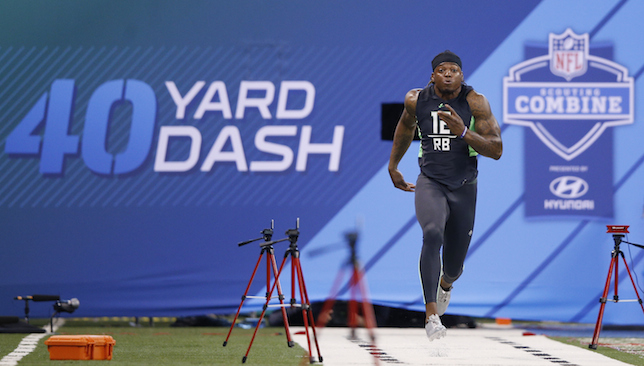
As a byproduct of its immense popularity, the NFL has turned into a year-round 365-day league and nothing is a testament to that more than the scouting combine.
The annual event, now consistently held in Indianapolis’ Lucas Oil Stadium, draws an incredible amount of coverage and a number of eyes for something that in the grand scheme of things is relatively miniscule to its larger product.
The reason for the combine is simple: it attempts to measure the incoming draft class both physically and mentally so NFL teams can have a better idea of what they’re getting.
However, while it’s impossible to argue with the tangible numbers from the physical drills, how those figures translate to the effectiveness or ineffectiveness of a player at the next level isn’t black and white.
Yes, the 40-yard dash is a good measure of speed and speed is a vital asset, especially for skill positions. Yes, doing well on the bench translates to having upper body strength, which is coveted for offensive and defensive lineman. But how a player fares in those workouts, or any of the workouts at the combine for that matter, isn’t the be-all and end-all.
Just ask Baltimore Ravens linebacking terror Terrell Suggs, who had a slow 4.8-second 40-yard dash time and managed a mediocre 19 bench-press reps. Or Super Bowl-winning quarterbacks Drew Brees and Russell Wilson, who were both criticised for their sub 6-foot height. Or the best wide receiver in the league at the moment, Antonio Brown, whose broad jump was 105 inches – the worst of anyone at his position that year.
On the flip side, you have someone like wideout bust Darrius Heyward-Bey, whose 4.25-second 40-time was so enticing that the Oakland Raiders drafted him seventh overall in 2009.
Unfortunately for the current Pittsburgh receiver, speed doesn’t help you catch the ball. Athleticism can be guaged in various ways, but is sometimes imeasurable, especially in the context of an actual game.
The mental side is another topic, but the point remains that the combine by no means paints a full picture of a player’s cognitive ability.
Something like the Wonderlic test, a standardised intelligence assesment, can determine a player’s math or problem-solving skills, but how that benefits a person on the field or means anything to football IQ is anyone’s guess.
Some teams value those scores and drill numbers more than others, but it’s been proven time and time again that the combine alone isn’t a predictor of success or failure in the NFL. It’s just supplemental information and should be treated as such.